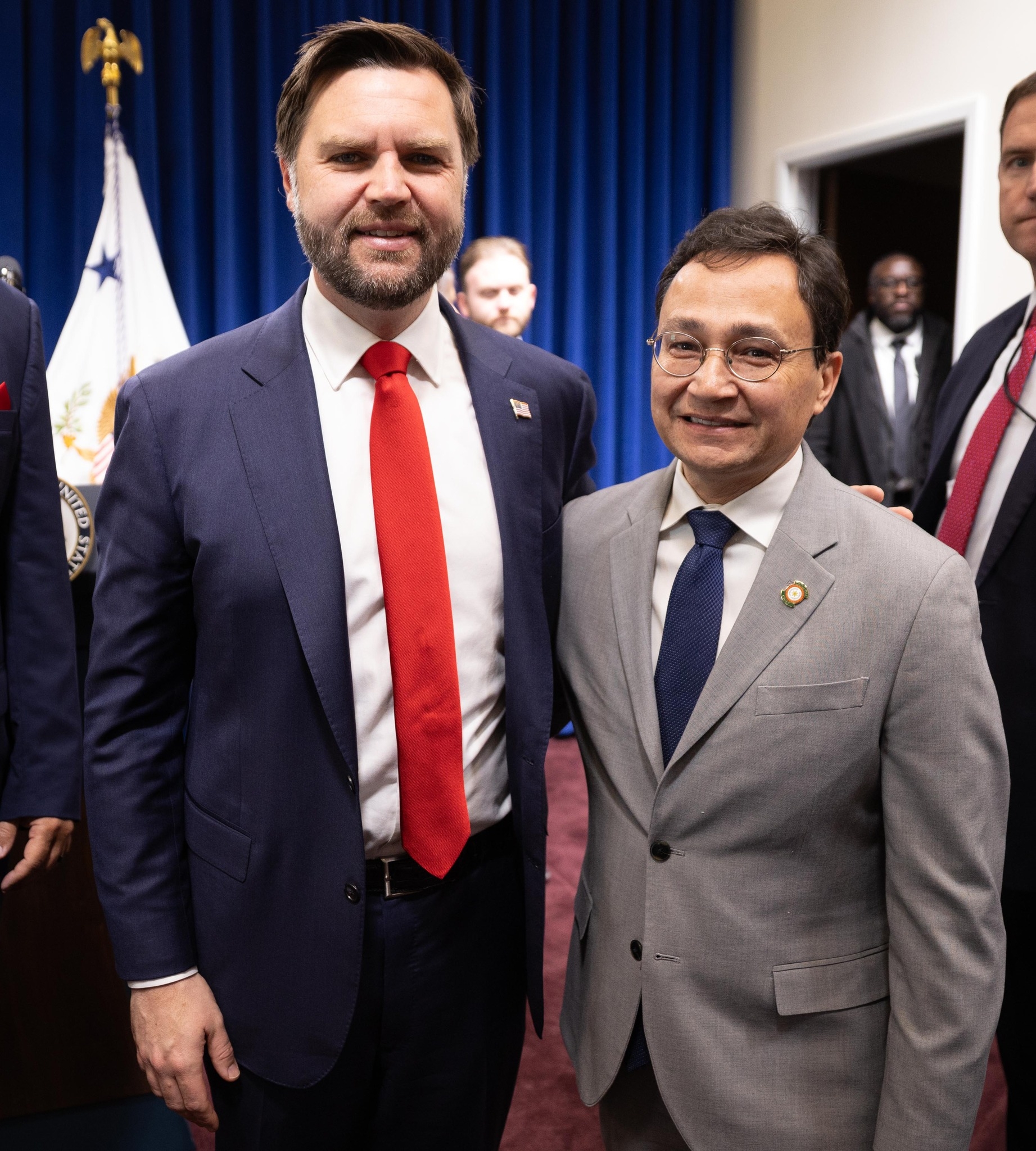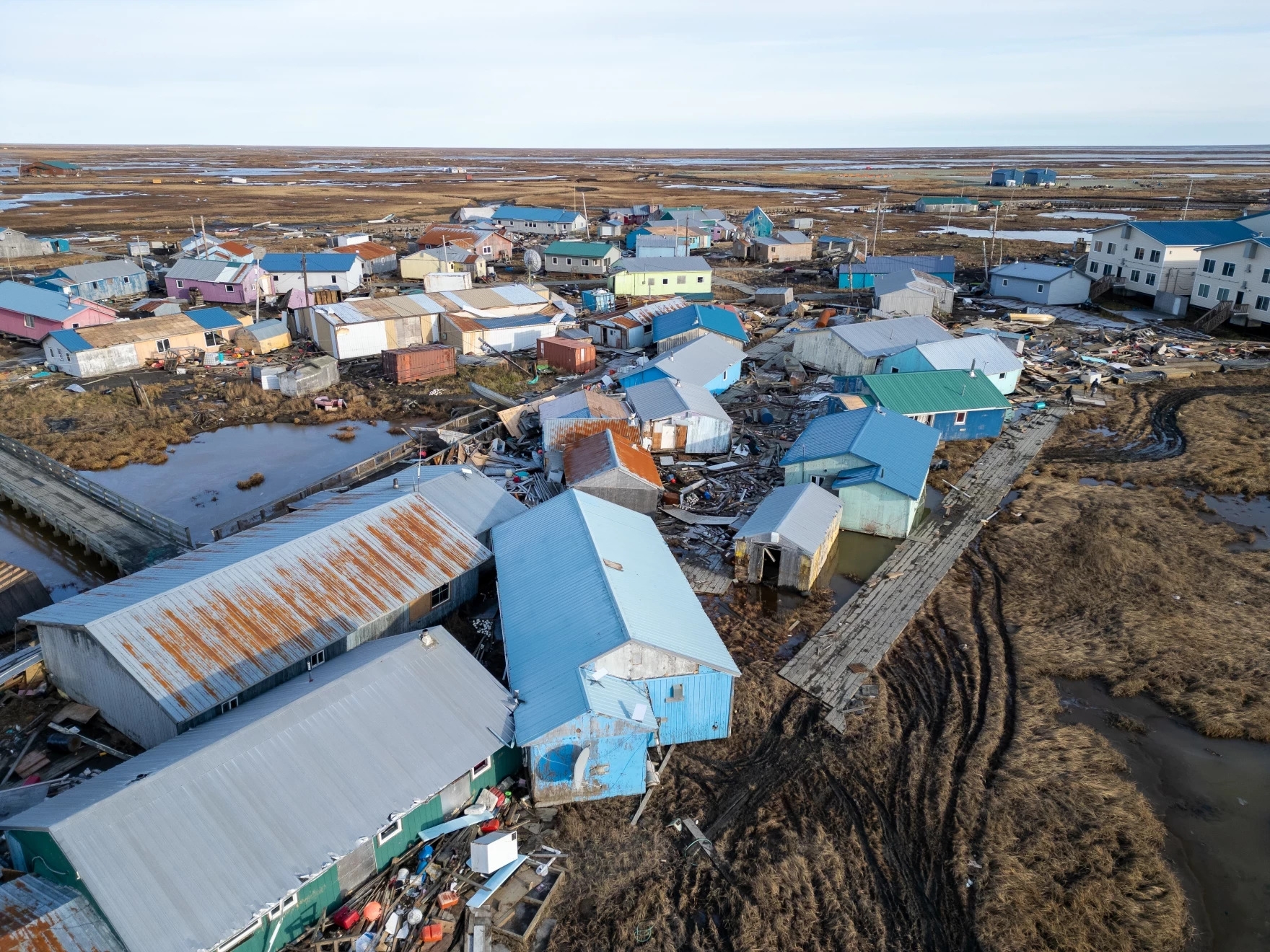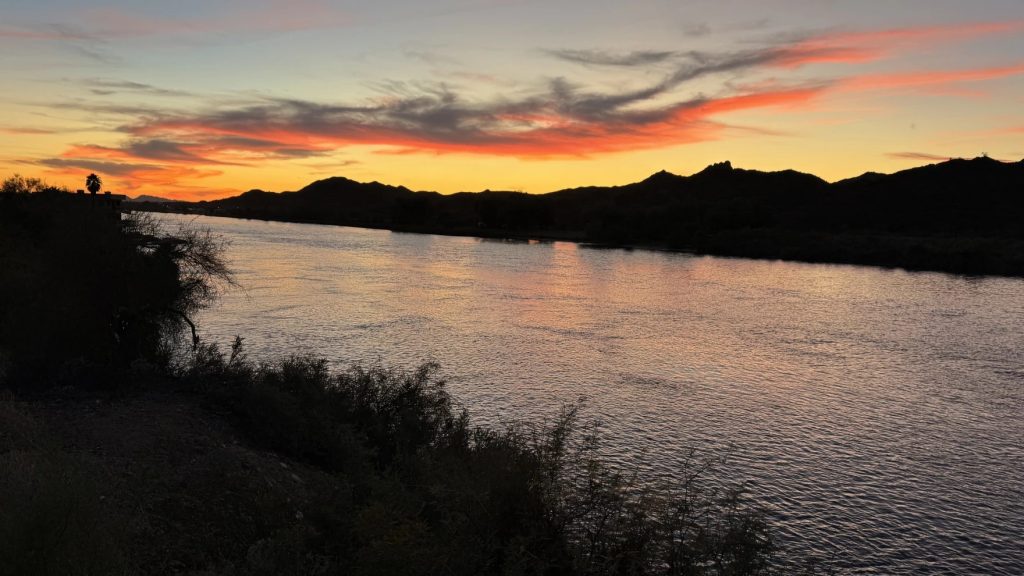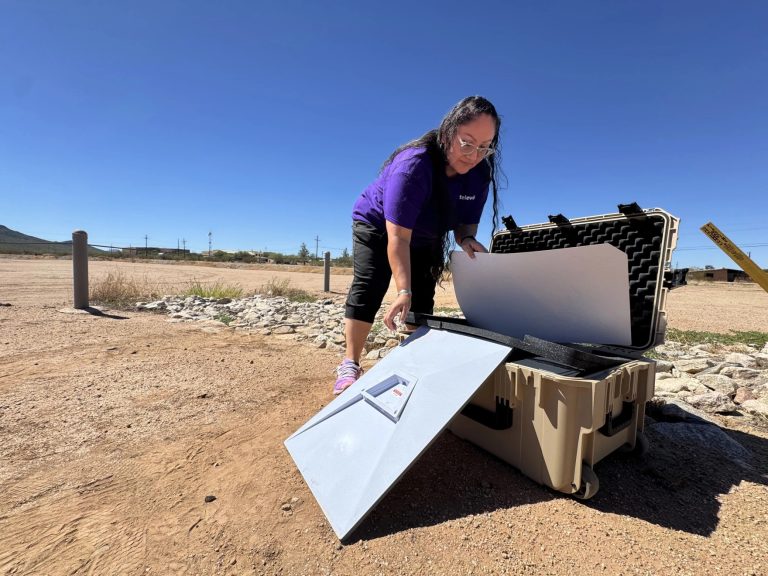Podcast: Play in new window | Download | Embed
Current rules defining how the Colorado River is to be shared by 40 million residents in the West will soon expire.
The seven Basin states had until Tuesday to negotiate those new guidelines.
As KJZZ’s Gabriel Pietrorazio reports, no deal was struck.
States still cannot come to terms, leaving tribes lost in the shuffle.
Daniel Cordalis (Navajo) runs the Native American Rights Fund’s Tribal Water Institute. He believes the Bureau of Reclamation’s deadline is arbitrary.
“If it means anything, maybe the federal government is going to step in and start throwing some weight around.”
When no Reclamation nominee has been tapped to replace President Donald Trump’s old pick, Ted Cooke.
Beyond the bickering Upper and Lower Basin states, there are 30 federally recognized tribes stuck in the middle of a decades-old debate on how best to divvy up the water, while keeping the ever-dwindling river flowing.
“They have to try to come up with ideas that are doable and that will benefit the entire system – not just tribes and I hope none of that is compromised by this deadline coming and going.”
 Alaska Federation of Natives President Ben Mallott and about 100 other tribal leaders were in Washington D.C. last week, and had a brief visit with Vice President J.D. Vance on Friday.
Alaska Federation of Natives President Ben Mallott and about 100 other tribal leaders were in Washington D.C. last week, and had a brief visit with Vice President J.D. Vance on Friday.
KNBA’s Rhonda McBride has more.
President Mallott said it was a good step forward to be invited and is looking forward to more engagement next year.
Vice President Vance gave a brief presentation on the potential for economic development in Indian Country, including manufacturing.
Principal chief of the Cherokee Nation, Chuck Hoskin, Jr., said it was good to hear the vice president focus on things that could be done in Indian Country.
 Months before a storm devastated parts of Western Alaska, a federal agency canceled a grant that would have helped protect one of the communities from flooding.
Months before a storm devastated parts of Western Alaska, a federal agency canceled a grant that would have helped protect one of the communities from flooding.
The Alaska Desk’s Alena Naiden from our flagship station KNBA has more on what that money could have done for the village of Kipnuk – and what lies ahead for the community.
Rayna Paul is the environmental director for the village of Kipnuk. Her house was one of many that was swept upriver during the historic storm last month.
“We were so not ready. We were so not prepared.”
Paul says the community now needs time to heal and rebuild.
The remnants of Typhoon Halong devastated about a dozen villages in the Yukon-Kuskokwim Delta.
Months before the storm, the U.S. Environmental Protection Agency canceled a $20 million dollar grant that would have helped Kipnuk protect infrastructure from flooding.
Paul says Kipnuk has been losing more than 10 feet of riverbank each year.
“We’re facing erosion. The sea level is rising. The permafrost is melting.”
Paul spent months applying for funding through the EPA’s Community Change Grants program. But the Trump administration terminated the program in May, in a broader effort to roll back environmental justice funding.
The decision is at the heart of the lawsuit that Kipnuk signed on to this summer.
In August, the court denied a motion to block the program’s termination. The plaintiffs appealed that decision.
Sheryl Musgrove is with the Alaska Institute for Justice. The organization helped Kipnuk secure the EPA grant funding.
“This was a chance for the federal government to finally show that they cared and that they were willing to invest in this small community in remote Alaska, and they took it away.”
EPA press secretary Brigit Hirsch said that the funding would not have prevented destruction in the community.
“While partisans on the left would apparently prefer to have seen those precious tax dollars washed away, EPA now has the resources available to ensure the money is spent appropriately and wisely.”
Musgrove says the first year of the grant was meant for planning and the construction of the revetment would not have begun by the time of the storm.
She says that the first phase would have also included hazardous waste removal from the bank.
“Now that’s in the river and the Bering Sea.”
Musgrove says she hopes the devastation of the storm highlights the needs of villages like Kipnuk and helps them mobilize resources for finding long-term solutions.
Get National Native News delivered to your inbox daily. Sign up for our daily newsletter today.
Download our NV1 Android or iOs App for breaking news alerts.
Check out the latest episode of Native America Calling




Leave a Reply